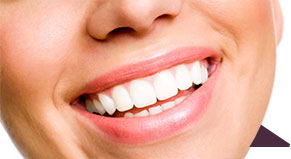6 Steps to Keeping Your Child’s Teeth Cavity Free
September 11th, 2014
 Caring for your child’s teeth at an early age and following important guidelines can help prevent cavities. Even a child’s baby teeth can develop cavities, which can be a painful nuisance. Here are six simple ways to help prevent cavities from developing in your children’s teeth.
Caring for your child’s teeth at an early age and following important guidelines can help prevent cavities. Even a child’s baby teeth can develop cavities, which can be a painful nuisance. Here are six simple ways to help prevent cavities from developing in your children’s teeth.
-
Keep Their Fingers Out Of Their Mouth
Try to prevent your child from putting their fingers in their mouth when you can. After putting their hands on things such as the floor, toys, food and other children, a baby’s fingers can transmit unwanted bacteria into their mouths. Of course, completely keeping your child’s fingers out of their mouth is almost impossible to do, as younger children tend to put many things in their mouths. However, even a small amount of prevention can go a long way.
-
Not Sharing is Caring
Try to avoid giving germs to your child by not sharing utensils, straws, cups, bites of food, toothbrushes and other items like these with them. An adult’s mouth can often have more germs than a child’s body has learned to fight. A young person’s mouth will experience harsher consequences as a result of the germs you may share with them. So try and stop the passing of bacteria by keeping your germs to yourself.
-
Start Brushing Early
Once your child first begins developing teeth, it’s important to keep them clean by regularly brushing them. Purchase a Baby’s First Toothbrush, which is smaller and has softer bristles. Then, you can use a very small amount of children’s toothpaste and brush your child’s teeth after meals. This can go a long way in preventing cavities in baby teeth.
-
Avoid Sugars
Try to keep your children away from sugary drinks and snacks that will feed the bacteria in their mouth. You can’t avoid all sugar, of course, so it’s good to know some helpful tips to reduce the risk that sugary food and drink will cause cavities. Try not to give your child a sugary drink or snack before a nap or bedtime. It’s best to give your child lots of water after a sugary snack as well to help wash away the sugars left in the mouth.
-
Clean Right
Many parents wipe off their children’s pacifiers by using their own saliva or clean off a spoon by licking off the food. This is an easy way for bacteria to transfer from their mouth to their children’s. If you need to clean a utensil or pacifier, wash it under the faucet and use a sanitized towel before giving it back to your child.
-
Visit the Dentist
You shouldn’t only visit your dentist when you need a tooth repaired. Dentists can also help to prevent any cavities and damage to the teeth that may be looming on the horizon, so it’s good to visit them regularly even if your child isn’t experiencing any problems. Bringing your child to the dentist at a young age will help keep their teeth clean and help keep cavities at bay.
By following these simple steps and taking action when needed, your child can grow up to have a healthy and bright smile. Most importantly, by practicing good oral hygiene, your child will learn the proper steps to take care of their teeth for years to come. And remember, leading by example is the best way to help show your child how to treat their teeth well.
If you have any more questions on how to prevent cavities in your child’s teeth, contact Water Tower Dental. We’d be happy to help answer any questions you need.









 Website Powered by Sesame 24-7™
Website Powered by Sesame 24-7™